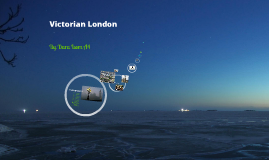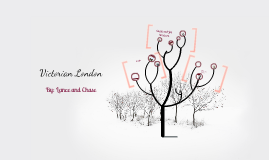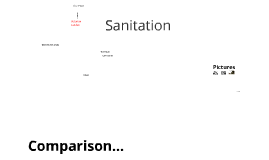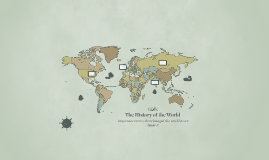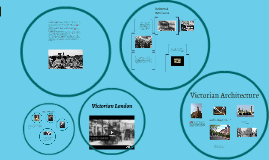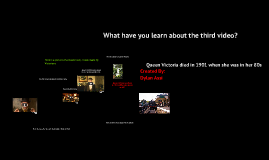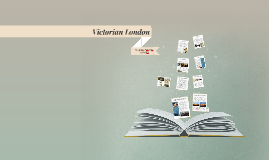Victorian London
Transcript: During the Victorian era technology was improving and many useful inventions were made. There were three classes as : the poor, the middle class and the rich. The Government gave a chance to the middle class to improve their city (London) and some wanted to build inventions that would be useful and would make a difference in the world. These inventions are the origin of the inventions that we enhance today. The Big Ben was actually the nickname for the Great Bell inside the tower. The tower itself was called the Elizabeth Tower. The Big Ben is located at the north end of the Palace of Westminster. It was opened in 1859 with a measurement of 319 feet (91 meters). On the night October 16, 1834, the Palace of Westminster was destroyed by a large fire. During its renovations Charles Barry designed the tower to incorporate with the new palace. The novella, Dr.Jekyll and Mr.Hyde, takes place and was written in the 1800's of London, which was better known as the Victorian Era. This was a highly sophisticated time period of great architecture, commerce, sport, culture, and technology. The Great Exhibition Palace of Westminster The Royal Institution Famous Institutions Some popular novel releases during this time were: Charles Dickens : "Oliver Twist," "Great Expectations," "Bleak House," "A Christmas Carol," etc. Mark Twain : "The Adventures of Tom Sawyer," "Adventures of Huckleberry Finn," "The Prince and the Pauper," etc. Lewis Carroll : "Alice's Adventures in Wonderland," "Through the Looking Glass" Robert Louis Stevenson : "Dr. Jekyll and Mr. Hyde" Just like it's always been, Great Britain was a monarchy in the Victorian Era, ruled over by Queen Victoria. She was aided by her prime minister, Viscount Melbourne, who served office her entire reign, and the Congress, which was split into houses called the House of Commons and the House of Parliament. Literature Victorian London This era was named after Queen Victoria, who reigned Britain from 1837 to 1901. This was known as a time of peace, prosperity, and rebirth. There were many Institutions in Victorian London in the 1800s. Two of them were The Royal Institution and The London Mechanics Institute (later Birkbeck College). The Royal Institution's main lectures were on science. The London Mechanics Institute originated in Scotland until this Institute was opened in 1823. The Palace is one of the most important of political life in the United Kingdom. "Westminster" has become a metonym for the UK Parliament, and the Westminster system of government has taken its name after it. 19th Century London London was the largest financial center of the entire world during the Victorian Era. Its commercial world was entangled with joint-stock banks, stock brokers, private banks, ship dealers, and merchants. Trade was blooming. During the Victorian Era, the British currency was the highest of the entire world. They monetary unit of the pound was the only currency to be backed up by gold reserves. Their sterling silver was also a very valuable resource. These reserves were all stored under high security in the Bank of England, located on Threadneedle St, London. By: Srija, Priyanka, and Klea Sports The Victorian era was the amazing age of English literature where there were many varieties of fictional novels that were rising to the spotlight. Victorian novels tend to write about the difficult lives in which hard work, confidence, perseverance, love and life morals. The purpose of poetry and its basic style and tone changed drastically during the Victorian Period. The great exhibition was located at the Crystal place. The Crystal Place is a beautiful shining building made out of glass. The Crystal Palace is the origin of the Great Exhibition.This exhibition was open to the public on MAY 1 st 1851. The man that made this occur was Queen Victoria's husband (Prince Albert) who dreamed of peace. He believed that all countries should have a place to display the wonders of their culture. The architectural team's leader was Joseph Paxton who helped create the blue print of the Great Exhibition. He wanted people to gain trust toward London. Many countries offered to share their valuable items to display in the great exhibition. There were over 100,000 artifacts and inventions from all over the globe in that one place. Eventually, they had to close the Crystal Palace on May 1 st 1851. Big Ben (Elizabeth Tower) During Victorian London, the government was ruled by the Queen, the Prime Minister, and the Congress. Technology The Palace of Westminster is also known as the Houses of Parliament and Westminster Palace. The Palace of Westminster is where House of Commons and the House of Lords, the two houses of the Parliament of the United Kingdom, meet. The Victorian Era is very important to the society of London because the police system was first established during this period. Before the 1800's, the country was only protected by the Navy, who were called "the defenders of Britain." But a






